Why Orthographic Mapping is Important when Teaching High Frequency Words
Before we jump into orthographic mapping, it’s time for a temperature check: Raise your hand if you’ve ever done one of the following (don’t be shy, no one sees you in front of your computer screen):
- Introduced a particular number (perhaps 3 or 5ish) of new “sight words” a week whole-class (and had students practice these words in a variety of ways)
- Gave students flash cards to practice words they had not yet mastered
- Incorporated fun, interactive, multisensory activities like chanting, spelling words in fun voices (like a cheerleader, robot, mouse, etc.), skywriting, rainbow writing, writing in the sand etc.
I think it’s fair to assume we all may have a history of incorporating some (if not all) of these practices into our “sight word instruction”. After all, sight words and flash cards are like a horse and carriage, right?. Otherwise, why would they be a “thing”…right?!
…Maybe not.
Having taught reading interventions in the primary grades for many years, I often encountered two types of students:
- Those who learned high frequency words organically. We read books, obviously filled with high frequency words. We incorporated high frequency words into quick and efficient word work activities. They picked up on those words through repeated exposure.
- Those who needed explicit direct instruction and repeated practice for high-frequency words in isolation (…and sometimes it still didn’t stick).
For the latter, I did all the things: flash cards, printables, building words, skywriting, writing in sand, HFW poems, targeted books. We even did fun activities, using our whole bodies – like hopping to words on the floor, swatting at words on the wall, and even scavenger word hunts. Yet, sometimes, the next day, they couldn’t retell me the word we practiced the day before. Defeating, I know. I’ve been there and I presume you have been there too.
Words Matter
As a Classics Minor having had taken many philosophy classes in my undergrad, one thing my professors always drilled was:
DEFINE YOUR TERMS.
As teachers, this is so important because we use SO many terms with colleagues and with students – some of them interchangeably – yet they do not always mean what we think they mean.
Teaching vs. Learning
First of all, there is a common misconception that children learn how to read in different ways.
This is false.
We may TEACH reading in different ways. (See my laundry list of approaches above.) However, students proficiently LEARN how to read in ONE way.
Teaching is what WE do. Learning is what the brain does.
Louisa Moats teaches us that our brains are not wired to read (or write). Reading is a skill that needs to be explicitly taught.
Keeping in mind that teaching and learning are not one in the same, let’s dive into truly understanding terms (along with some background information) in relation to high frequency word instruction.
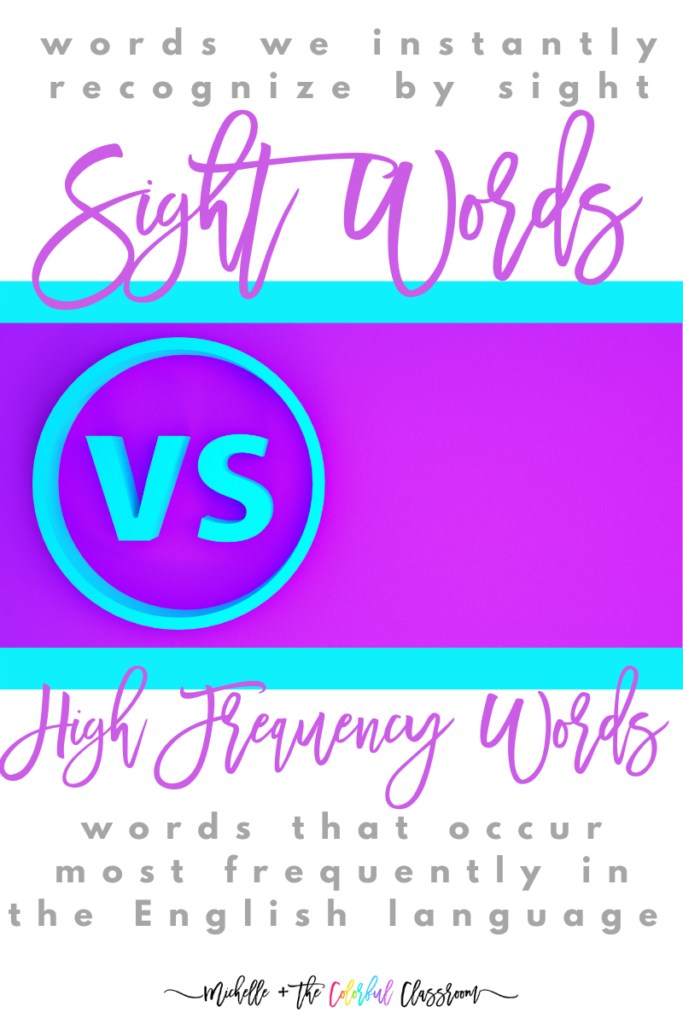
What is a sight word?
The term “sight word” is actually highly misunderstood. Sight words refer to the words we come to know by sight. These are the words we recognize automatically. We know them in a FLASH! They are words we can read in isolation AND in context. We do not need to take the time or effort to decode and decipher. There is no magical list of sight words. Sight words differ from person to person, from child to child.
For example, a paleontologist would recognize obscure dinosaur names by sight — ones I’ve never even heard of.
- Colepiocephale
- Piatnitzkysaurus
- Micropachycephalosaurus
(I swear, I didn’t make these up!)
Prescription drugs with bizarre names could be sight words for doctors.
- Talimogene Laherparepvec
- IncobotulinumtoxinA
- Isavuconazonium sulfate
A yoga instructor may even have a bank of Sanskrit terms in her sight word bank.
- Adho Mukha Svanasana (Downward Dog)
- Supta Baddha Konasana (Reclined Goddess Pose)
- Eka Pada Rajakapotasana (One Legged King Pigeon Pose)
(These are right up my alley. 🧘🏻♀️)
It’s important to remember that words are NOT called sight words because we LEARN them by sight. We know them by sight. Ultimately, the more sight words we have banked up, the more fluently we can read.
Perhaps you’ve even heard the endearing saying: every word wants to be a sight word when it grows up.
Fun Fact: The average, literate adult has a sight word bank of 30,000-70,000 words. This is called our instant, orthographic lexicon. This helps us read a word in 1/20th of a second, at a rate of approximately 150-220 words a minute. Typically, we only need to be exposed to a word 1-4 times to commit that word to memory. Isn’t that amazing?
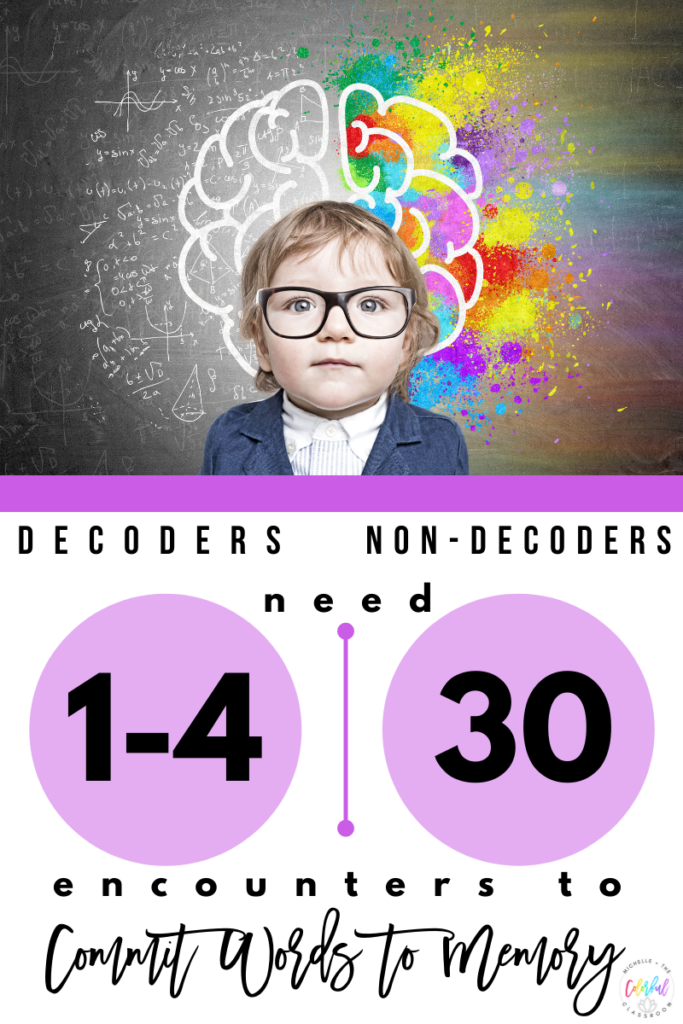
What is a high-frequency word?
High-frequency words refer to the most commonly occurring words in print. These are words like: a, the, and — words we see EVERYWHERE. Their frequency in print is HIGH. Therefore, you can see why knowing them instantaneously would be beneficial.
We can contrast this with low frequency words: words that do not appear as often in print. Some examples of low frequency words are twang and pigeon. They’re certainly not in every book.
Who invented high-frequency words?
Back in the 1930s, a professor named Dr. Edward William Dolch, sometimes referred to as the Father of Sight Words, conducted research to see which words were most frequently used in print. This research compelled him to compile and publish a list of high-frequency words. When it comes to reading instruction, Dolch was a proponent of the Whole Language method, which is most likely why it’s been ingrained in us that sight words are learned by sight, by memory, using visual skills.
Dolch Words
Based on the children’s books of his era, Dolch compiled a list of frequently used words in the English language. He had a list 220 “service words”, which include:
- Adjectives (funny, pretty, yellow)
- Adverbs (again, never, far)
- Articles (a, an, the)
- Conjunctions (and, but, or)
- Pronouns (he, she, it)
- Prepositions (under, over, around)
- Verbs (walk, ran, jump)
Dolch believed these “service words” should easily be recognizable in order to be a fluent reader.
He also compiled a separate list of 95 nouns that were common in his era (like “Santa Claus” and “kitty”), but not necessarily common to every piece of print.
It is thought that the Dolch Word List comprises approximately 80% of the words you would see in a typical children’s book and 50% of the words found in writing for adults.
For free printable Dolch Word Cards, click here!
Fry Words
In the 1950s (later updated in 1980), Dr. Edward Fry expanded on Dolch’s research to include the most common 1,000 words in the English language. (Dolch’s list includes words frequently seen up to 3rd grade, while the 1,000 words work their way up to 9th grade.) The Fry words are listed by the frequency with which they occur and are broken down into groups of 100. Therefore, the first 100 words are the 100 most frequently occurring words in the English language. Learning all 1,000 words would equip a child to read approximately 90% of words in a typical book, newspaper, or website.
For free printable Fry Word Cards, click here (Words 1-500) and here (Words 501-1,000)!
Red Words
The Orton-Gillingham approach utilizes another term you may have heard of: “red words”. These are words that just don’t follow the rules: they cannot be sounded phonetically and do not contain regular spelling patterns (However, they may still have regular parts, i.e. in “should” the /sh/ and /d/ are completely regular.)
Think about what the color red means in our society. STOP!
We have red stop lights, red stop signs. Warning signs may be red. These words are called “red words” because we need to stop and think about them – rather than try to decode them.
Approximately 15% of words in the English language are considered “red”, or non-phonetic. The good news is, though, that 85% of words in the English language ARE decodable using phonics!
Orton-Gillingham Weekly states “Out of the estimated 500 red words found in English, about 200 are found in grades K-2 text.” Learning and knowing red words automatically equips a child to read 50% of words they may encounter in a text. However, it is important to note, not all red words are high-frequency words (like “island”, “height”, and “yolk”).
Snap Words, Flash Words – I’m so confused!
All of this terminology can feel overwhelming — and even confusing. I personally prefer calling high frequency words “snap words” or “flash words”. These are the words we NEED to know in a snap, or in a flash. Emphasis on need. The terminology here differs from sight words, as those would be the words we ALREADY KNOW in a snap/flash.
How to Teach High Frequency Words with Orthographic Mapping
We don’t learn words by sight
Stanislas Dehaene, cognitive neuroscientist and author of Reading in the Brain: The New Science of How We Read, refutes the notion of teaching through the “whole language” method and the concept of learning to read words by sight (i.e. whole word reading). “We do not recognize a printed word through a holistic grasping of its contours, because our brain breaks it down into letters and graphemes.”
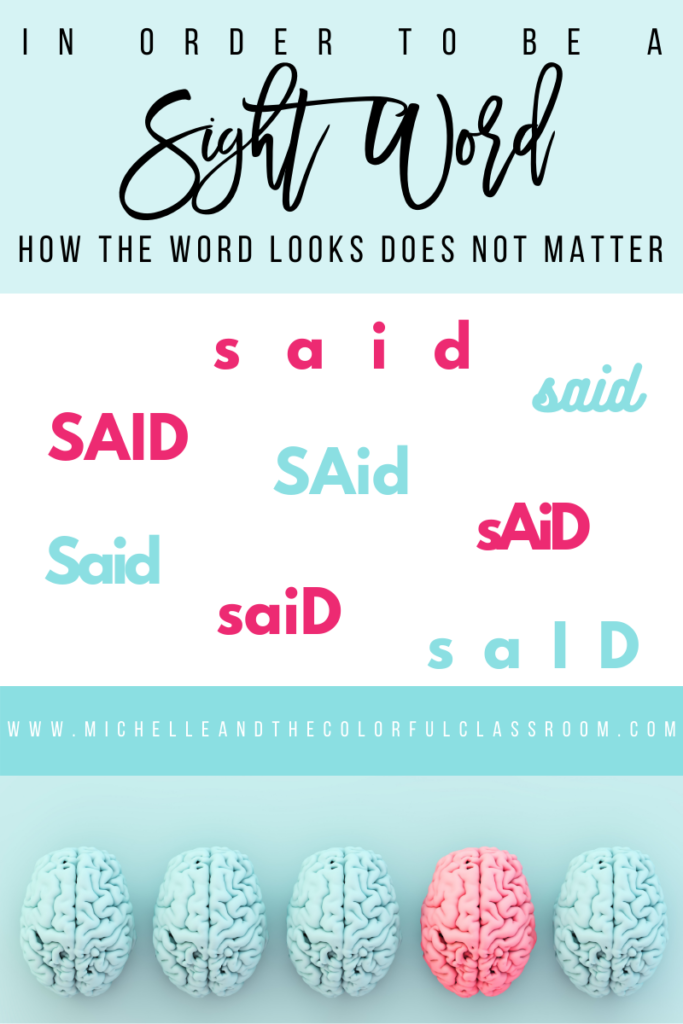
Our brain has mapped these graphemes (and the order in which they’re represented) into our brains, for quick word retrieval.
High Frequency Words Decodable
The whole notion of having to memorize high frequency words by sight is also quite silly when you consider: many high frequency words are indeed decodable.
For example:
- CVC words: big, not, get
- Short Vowel with Blends and/or Digraphs: jump, black, them
- Silent e: make, came, use
- Vowel Pair: see, play, eat
What is Orthographic Mapping?
The term Orthographic Mapping was first coined by Linnea Ehri. Again, Classics minor here! I’m a sucker for etymology. Orthography comes from the Greek “orthos” meaning “correct” and “graphein” meaning “to write” – ultimately, having to do with proper spelling.
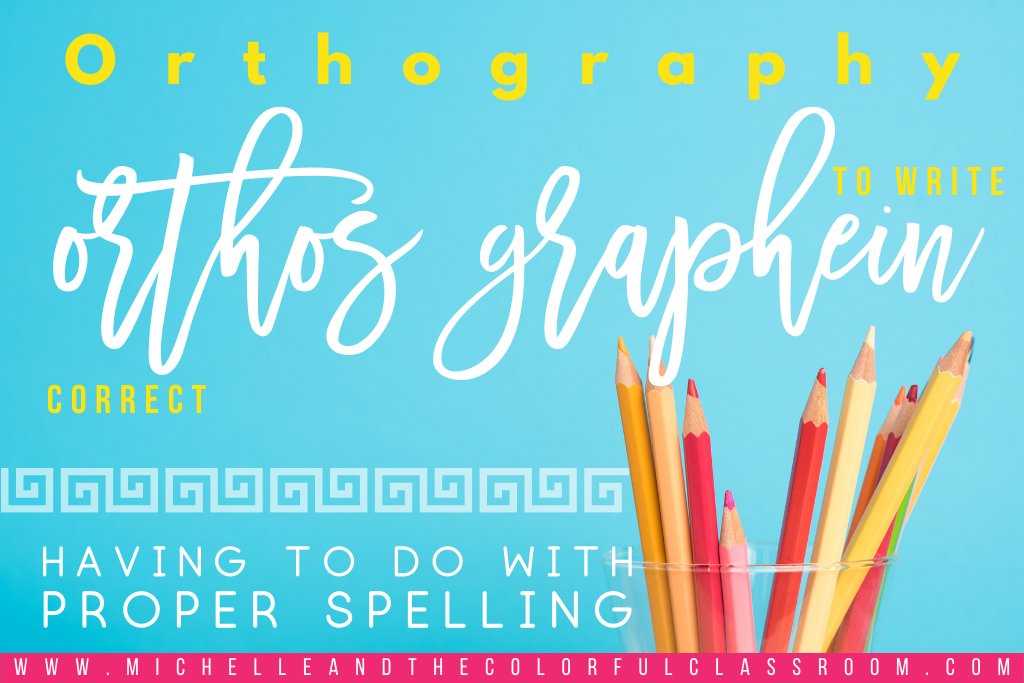
Orthographic mapping refers to the mental process we use to turn an unfamiliar word into a sight word. When we orthographically map words, we take note of the proper spelling (graphemes or letter string combinations – regular and irregular) for the sounds that we hear (as we segment phonemes). It is how we permanently store words into long-term memory.
Orthographic mapping is a cognitive process that supports what readers need to both read and spell words correctly and with automaticity.
David Kilpatrick Orthographic Mapping
In Equipped for Reading Success, David Kilpatrick writes,
“To be good orthographic mappers, children need to develop three skills: automatic letter-sound associations, highly proficient phoneme awareness, and word study.”
David Kilpatrick
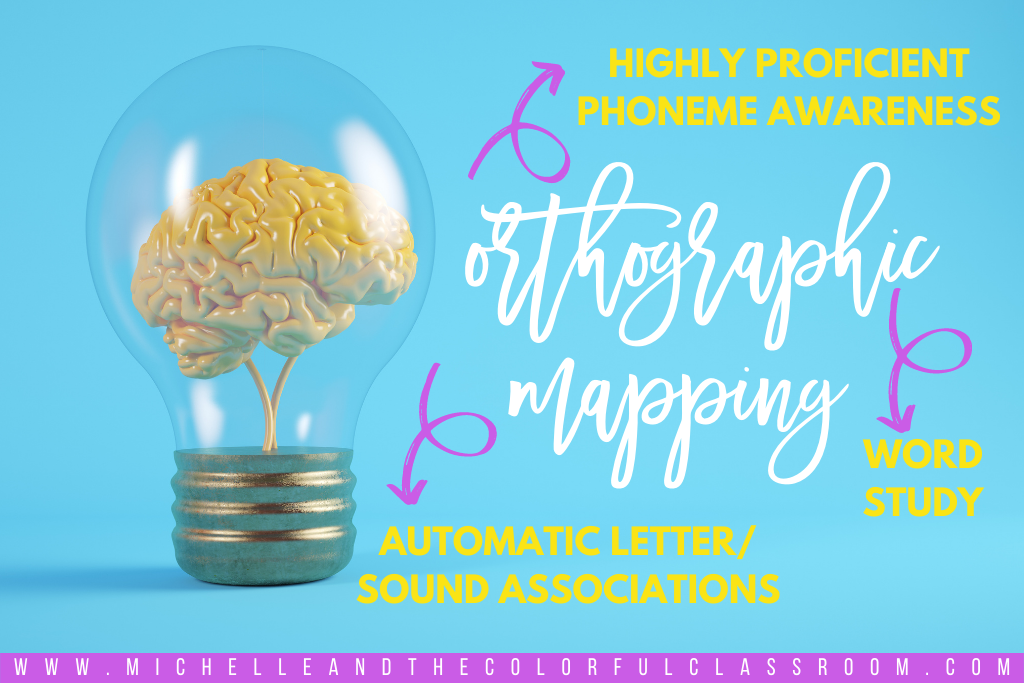
Orthographic Mapping Instruction
When explicitly teaching high frequency words, we can leverage orthographic mapping with a phoneme-grapheme mapping routine to:
- First: read with our ears and hear the word: “with”
- Next: count the sounds (phonemes) we hear: 3 phonemes
- Finally, assign the correct graphemes (letters) to represent each phoneme: w-i-th
Consider the decodable (regular) high frequency word: with
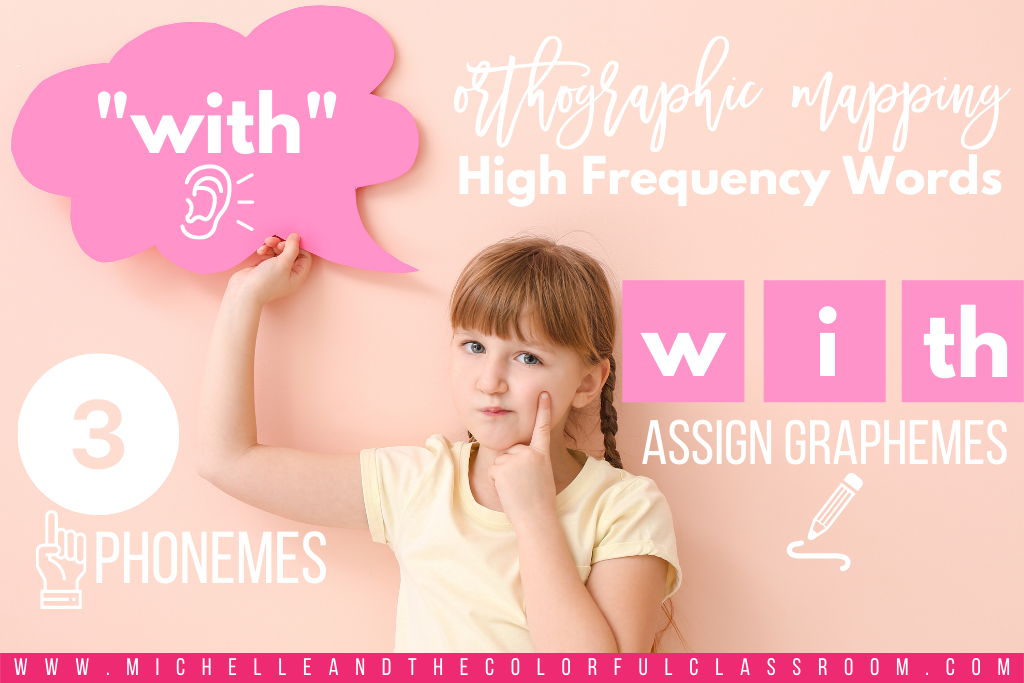
This is one way it can go whole class:
- Say the word: “with”
- Students repeat the word: “with”
- Hold up fingers to count phonemes: /w/-/i/-/th/
- Assign the proper graphemes to spell the word: w – i – th
- Repeat the word as you point to it. Segments each sound and underline the letters that represent each sound.
- Cover the word.
- Have students practice spelling the word on their slates.
When we have an irregular high frequency word, we can map it the same way. We simply point out the irregular part. Often times, even the “irregular” words have some kind of spelling generalization that may make sense with advanced phonics knowledge.
This is one way it can go whole class:
- Say the word.
- Students repeat the word.
- Segment the word into individual phonemes.
- Represent each phoneme with a dot or sound box.
- Assign the proper graphemes to each phoneme.
- Use a code to signify the irregular part. You may choose to use a symbol (like a squiggly line above or below that part) or even a slash (for silent letters). In my Colorful Classroom, we like to color code the irregular part.
- Reinforce the proper spelling with prompts:
(The following prompts are for the word: said)
What sound does “said” begin with? → /s/
What letter makes that sound? → s
Which letters say /e/? → (“ai”)
What is the next/final sound? → /d/
- Spell the word aloud while writing/tracing the word. You may choose to say the irregular part a bit louder, so it stands out.
Heart Word Magic
More recently, I’ve heard the term “Heart Words” used more and more. Really Great Reading came out with a teaching tool called “Heart Word Magic” to help students learn how to both read and spell high-frequency words.
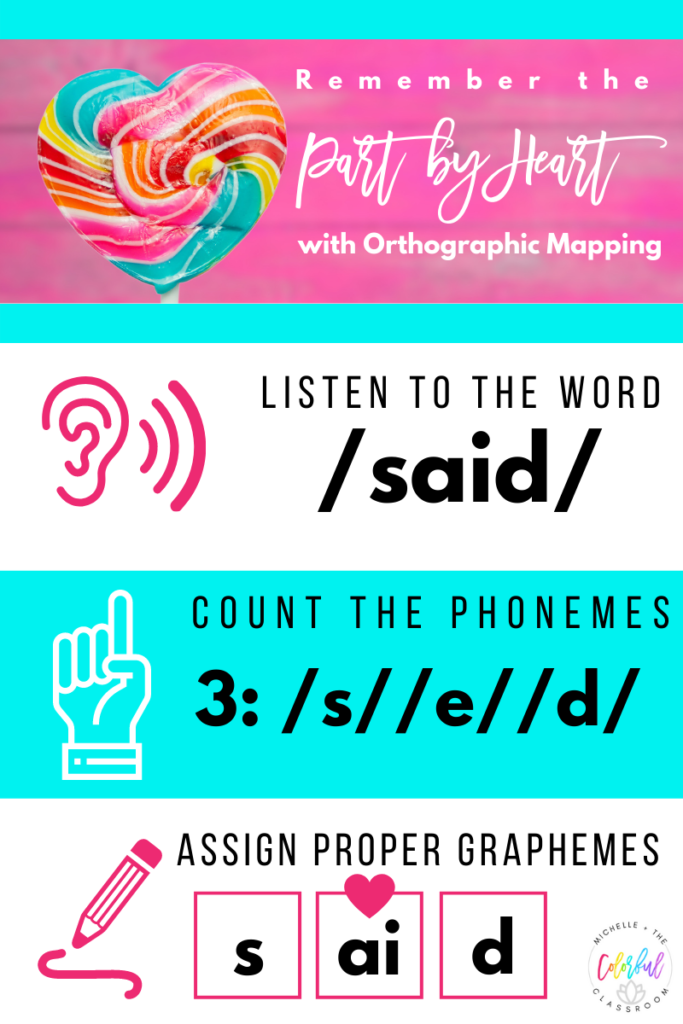
Will you try Phoneme-Grapheme Mapping to Promote Orthographic Mapping?
As you reflect on your teaching practice, think about how you typically went about teaching high frequency words. Is there anything you want to adjust, revise, or completely overhaul?
Maybe it starts with no longer calling HFWs sight words to students.
Perhaps, it starts with explicitly teaching high frequency words using phoneme-grapheme mapping whole class.
Of course, it could even start with sprinkling in some routines that promote orthographic mapping into small group.
Regardless, my hope is that you walk away knowing:
- Sight Words and High Frequency Words are not synonymous
- Many High Frequency Words are decodable
- Orthographic mapping is the process how the brain commits words to long term memory
If you haven’t already, don’t forget to snag my Seasonal Orthographic Mapping Templates to help you with this important work!
Happy teaching!
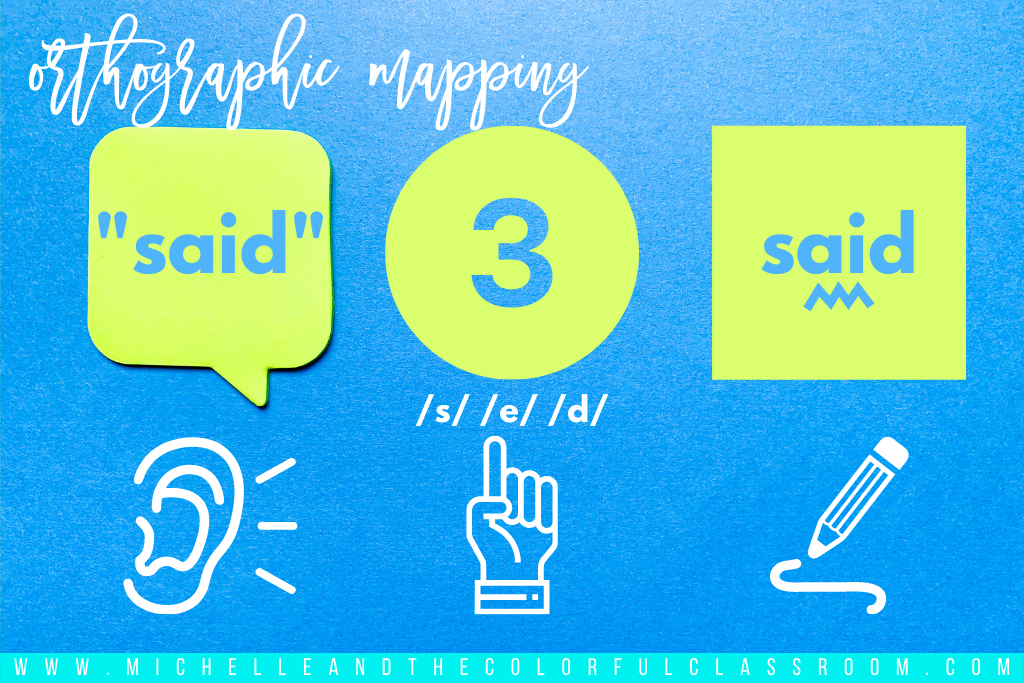
Related Articles
How Many Sight Words Do You Have in Your Orthographic Lexicon or Sight Word Memory?

One Comment